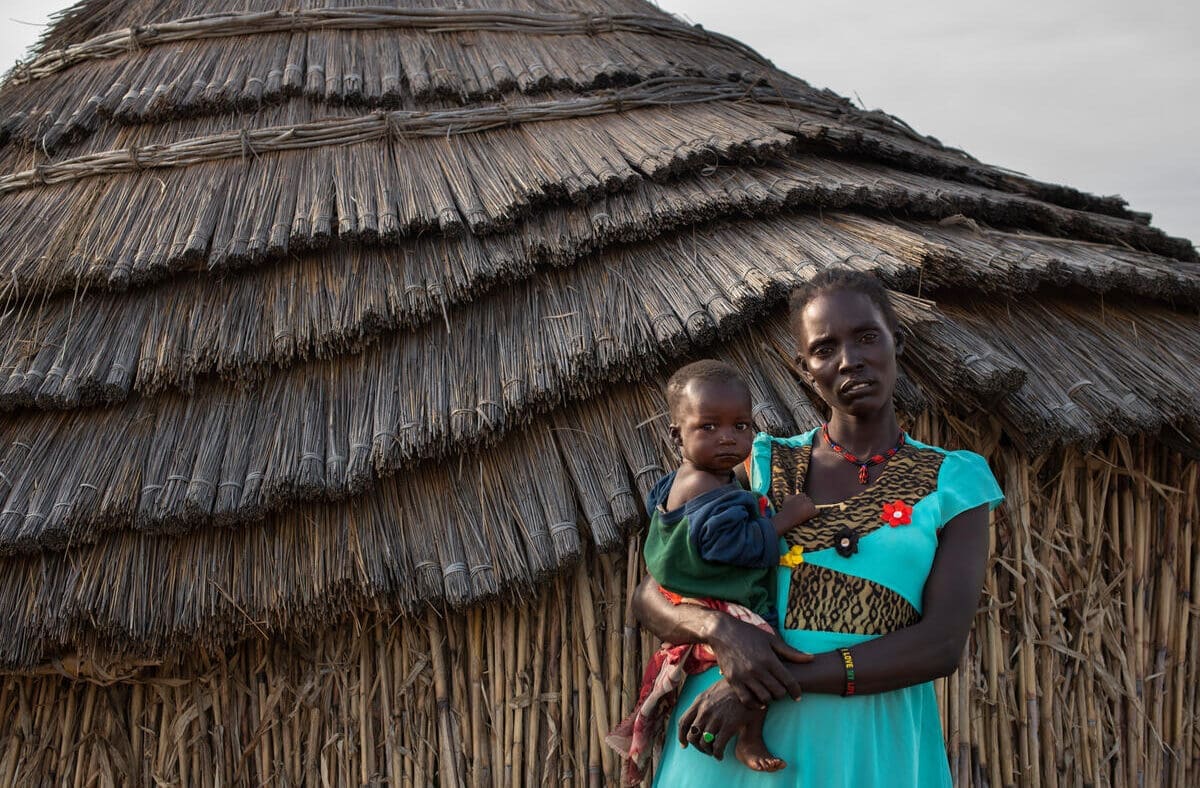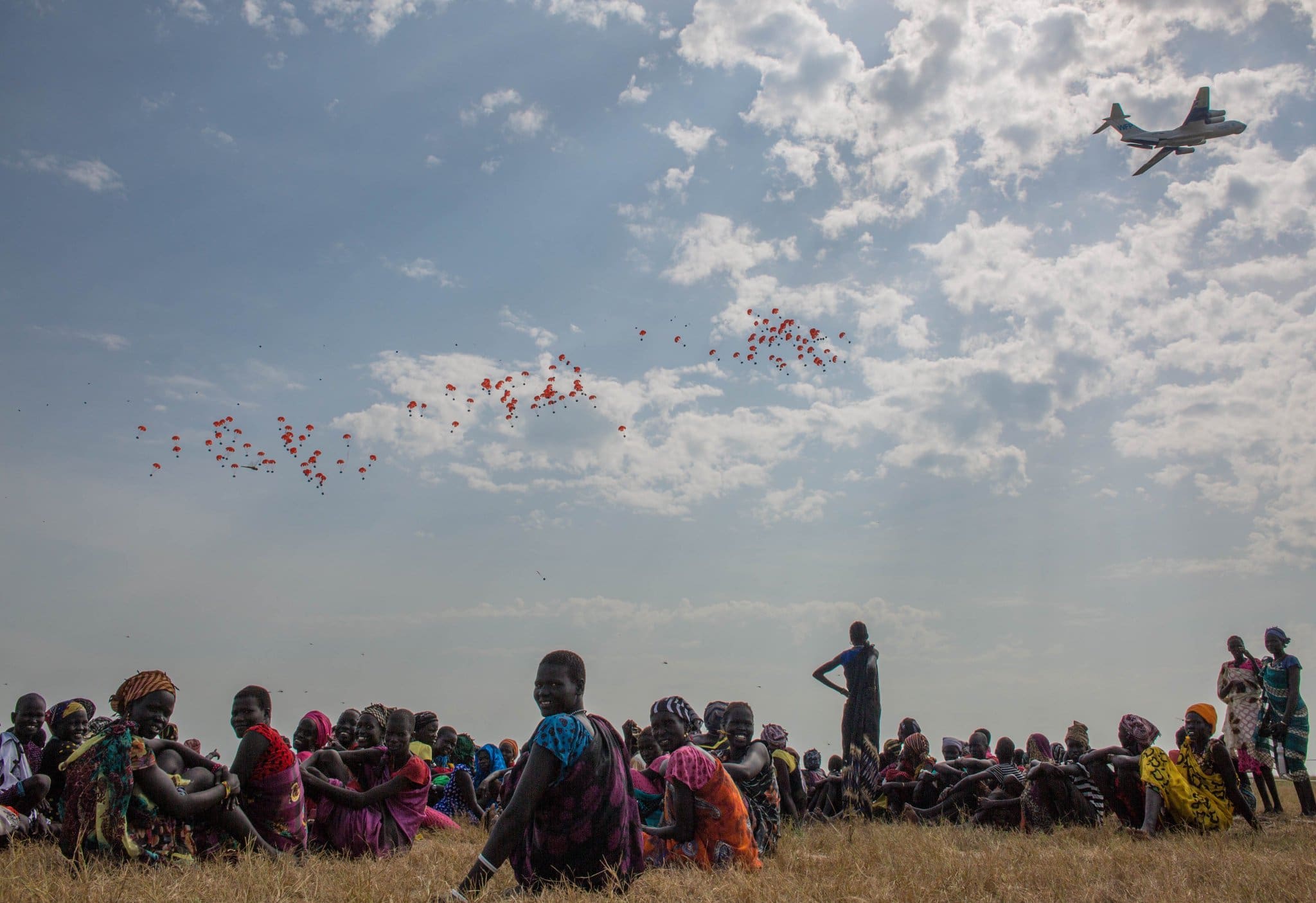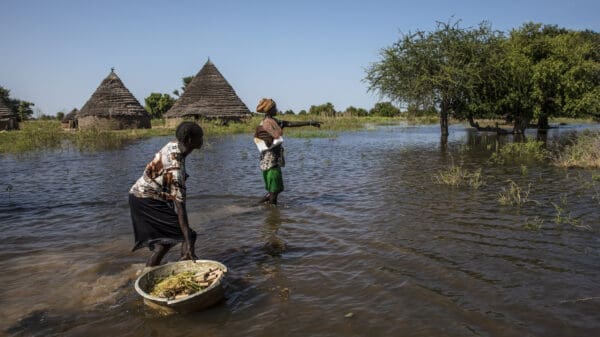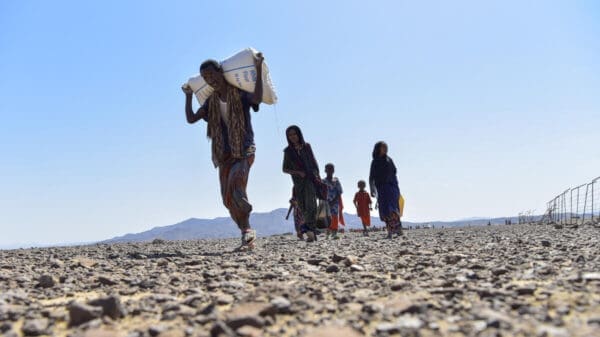
South Sudan
Frontlines of the Climate Crisis
With localized droughts and four years of consecutive flooding, South Sudan is bearing the brunt of the climate crisis. Send lifesaving food today.
Record Levels of Hunger
A hunger emergency is looming on the border between South Sudan and Sudan as families fleeing fighting in Sudan continue to cross the border every day. Among the nearly 300,000 people who have arrived in South Sudan in the last five months, one in five children are malnourished and 90% of families say they are going multiple days without eating. These people arrive in a country already grappling with years of flooding, drought, increasing violence and surging food and fuel prices.
of consecutive floods
people are facing severe hunger
people are displaced within the country
what’s driving hunger in South sudan?

Climate Extremes
Four consecutive years of record flooding has submerged large swathes of land across South Sudan, including farmland. The country’s wetlands, known as the Sudd, have expanded threefold since 2019. This has led to widespread displacement and fueled rising hunger.

Conflict
More than 2 million people are displaced across South Sudan, the majority of whom were forced from their homes due to conflict. Violence continues to surge in Jonglei and Upper Nile States, forcing thousands from their home and hampering humanitarian access. Meanwhile, as land is swallowed by creeping floodwaters, many people are unable to move to higher ground due to conflict.

Rising Prices
The effects of climate extremes and conflict are compounded by rising food and fuel prices. A basic meal is out of reach for millions of families. In a country where three in four people live below the international poverty line, these rising prices put families at higher risk of hunger.



WFP’s Crisis Response in South Sudan
The U.N. World Food Programme has been providing lifesaving support to millions of people in virtually all areas of the country that are accessible since independence in 2011 (and as part of Sudan since 1963).

Food assistance is essential to avoid a humanitarian catastrophe in South Sudan. In 2022, WFP reached 5.6 million people facing severe hunger with food and nutrition assistance – including nearly 600,000 flood-affected people.


WFP is scaling up its resilience-building activities to help communities prepare for, cope with and recover from extreme weather events. In Unity State, WFP began restoring a key roadway following devastating floods.


WFP’s cash-based transfers help families supplement their diets while boosting local markets and production. In 2021, WFP transferred over $39 million dollars to people in need across all 10 states of South Sudan.


Airdrops are a last resort for families trapped in dangerous, inaccessible areas of South Sudan. These places are cut off by conditions that make roads impassable. Airdrops allow WFP to reach these areas with emergency food.

Help Save Lives
People in countries like South Sudan are suffering from simultaneous droughts and floods. Your gift will deliver critical lifesaving food.
What’s Happening in South Sudan?
Read the latest stories and updates from South Sudan.





